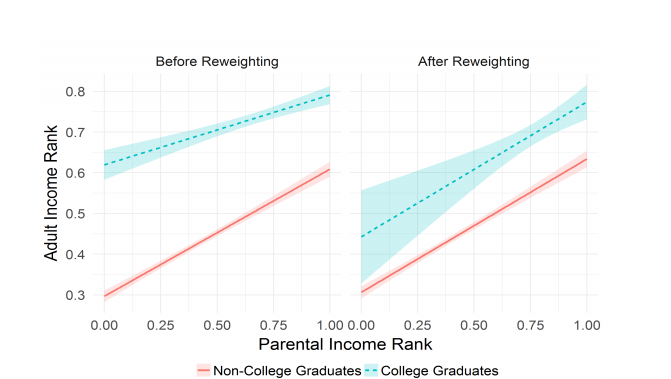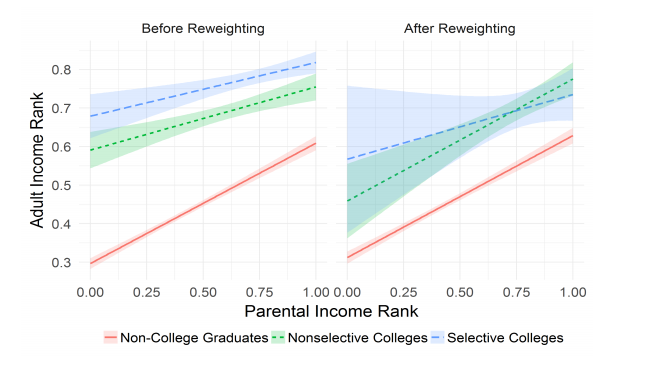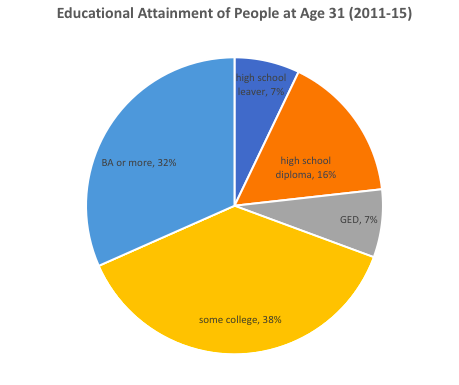Corey Robin’s essay, “Why Has It Taken Us So Long to See Trump’s Weakness?,” is mainly interesting as an argument about trends in reporting. Robin criticizes
a new genre of journalism that forgoes the pedestrian task of reporting the news in favor of explaining it through the lens of academic research. Ensconced at Vox, FiveThirtyEight, dedicated pages of the Washington Post and the New York Times, and across Twitter, the explainers place great stock in the authority of scholarship — and in journalists who know how to wield the authority of scholars
He argues, “There’s a bad synergy at work in the Historovox — as I call this complex of scholars and journalists — between the short-termism of the news cycle and the longue durée-ism of the academy. … When academic knowledge is on tap for the media, the result is not a fusion of the best of academia and the best of journalism but the worst of both worlds.”
An obvious objection is that there are more than just two genres of writing about politics (academic analysis and pedestrian journalism). I’d place Robin’s “Historovox” on a longer list.
- Old-school deadline-driven political reporting: The writer tells you what happened yesterday. The lede is an event: a speech, an endorsement, a vote, an indictment. Subsequent paragraphs tell (or remind) you what happened earlier, leading up to this new event. To the extent that the news is explained, the available explanations include: what the actors and their spokespeople say happened, how their critics reply, and the tactical advantages that will result for each. An imaginary example: “The Senator traveled to Wisconsin today to talk about jobs. This follows on the heels of her speech about the environment in Los Angeles last week. People involved in her campaign said that she is engaging two important constituencies. Her opponent charged that she wants ‘to rake in the dollars from spoiled Hollywood liberals.’ Of course, prospective presidential candidates always test their support in key states.”
- Positivist, mostly quantitative academic scholarship: The writer looks for statistically significant patterns in representative samples of data (rather than “anecdotes”). She poses and tests explicit hypotheses. She situates her original results in the context of peer-reviewed literature. For instance, “Some previous studies suggest that candidates mainly appeal to donors. Other studies suggest that they focus on ordinary voters. Our analysis of 256 campaign events finds that donor-appeal explains 11% more of the variance in decisions about candidate travel.”
- Ideological advocacy: The writer hopes to advance conservatism, or socialism, or environmentalism, or whatever, and uses recent political events as evidence and as a “hook” to persuade the unconvinced and mobilize the base. “The Senator made a great speech about jobs in Wisconsin but needs to remember why unions have declined. It’s no accident that wages have fallen as union membership has fallen: these are the results of neoliberal policy choices.” This style extends from opinion magazines and op-ed pieces deeply into academic journals.
- Theory-building: The writer is primarily interested in developing and defending general social theories, which may have both normative and explanatory components. She is trying to develop, for example, a new version of civic republicanism or intersectional feminism or social capital theory. As in #3, recent examples serve as illustrations and “hooks,” but the argument is less predictable, less topical, and may be considerably more complex.
- The “Historovox” is a fusion of #1 with #2 and/or #4. Its typical style is to “explain” a concrete recent event by summarizing some relevant positivist social science (#2) and adding an interesting social theory (#4). The very bright, broadly-educated reporter works by searching the scholarly literature and interviewing academics. This style claims to avoid #3, which is seen as politically biased, in favor of “research.”
Robin offers a subtle defense of #1–traditional deadline journalism–by way of quotations from political theorists who might be seen as “particularists”: highly skeptical of generalization and concerned with attending to details:
Everyone knows and cites Orwell’s famous adage: “To see what is front of one’s nose needs a constant struggle.” Less cited is what follows: “One thing that helps toward it is to keep a diary, or, at any rate, to keep some kind of record of one’s opinions about important events. Otherwise, when some particularly absurd belief is exploded by events, one may simply forget that one ever held it.”
and
the job of the scholar is to recall and retrieve what the Marxist critic Walter Benjamin described as “every image of the past that is not recognized by the present.” The task is not to provide useful knowledge to the present; it is to insist on, to keep a record of, the most seemingly useless counter-knowledge from the past — for the sake of an as-yet-to-be imagined future.
If I read him right, Robin is not saying that we need writers to express opinions about each event and record what they have opined. Rather, we–readers, citizens–should do that. Journalism gives us the raw material for our daily opinion-formation, and we should hold ourselves accountable by checking our views as new data arrive.
As a bit of a particularist myself, I find these quotes resonant, and I start with the premise that we badly need paid professional reporters to cover events. But the objection to #1 is that it was never theory-free, never just a record of what happened yesterday. Instead, it always embodied a problematic general theory, according to which history results from explicit decisions by self-interested professional politicians who compete with each other. Absent are deeper causes, issues ignored by the major parties, areas of agreement, and the work of citizens. Thus deadline journalism never served citizen-readers as well as it should have. It served up the wrong mix of “news events” for us to form opinions about.
#2 is valuable but has its limitations. As I argued right after the 2016 election, positivist social scientists mostly failed to predict Trump because their job is to detect trends in data collected already (i.e., the past). They can’t see that something is about to shift fundamentally, and when that happens, they retain a bias in favor of treating the new event as one outlying datapoint that doesn’t threaten the theory. A classic version of that critique is Robert C. Lieberman, “Ideas, Institutions, and Political Order: Explaining Political Change.” American Political Science Review 96.4 (2002): 697-712.
Another problem with #2 is tempo. The process of collecting representative data, analyzing it, and publishing it in peer-reviewed form takes many months or years, by which time events have moved on. Citizens cannot benefit from analysis unless they can use it in time.
Everyone criticizes #3–editorializing in support of an ideology–yet ideologies are indispensable heuristics, and each case of advocacy can contribute to a rich public sphere as long as you read it critically along with other views.
The advantage of #5 is translation. It connects social theory and empirical data to the news, allowing readers/citizens to learn from scholarly expertise. The big disadvantage is that there are theories for every fact. As Robin observes, when Trump looks strong, it’s time to cite the literature on authoritarianism. When he’s weak, we dust off the literature on the weak presidency. Historovox writers have a Malcolm-Gladwellish tendency to discover a new idea and find evidence of it everywhere for a while. Then events change, interests wander, and they find a new idea. As he argues, this is no way to learn.
But I think several commentators on Crooked Timber are right that explanatory journalism strives to address a real need. If we only had the first four categories listed above as separate streams, we’d be crying out for linkages. Sites like Vox and FiveThirtyEight (and The Conversation) don’t do this perfectly, but they seem fairly self-reflective and dedicated to self-improvement, and nobody could pull it off perfectly at first.
See also: why political science dismissed Trump and political theory predicted him; why political science dismissed Trump and political theory predicted him, revisited;







